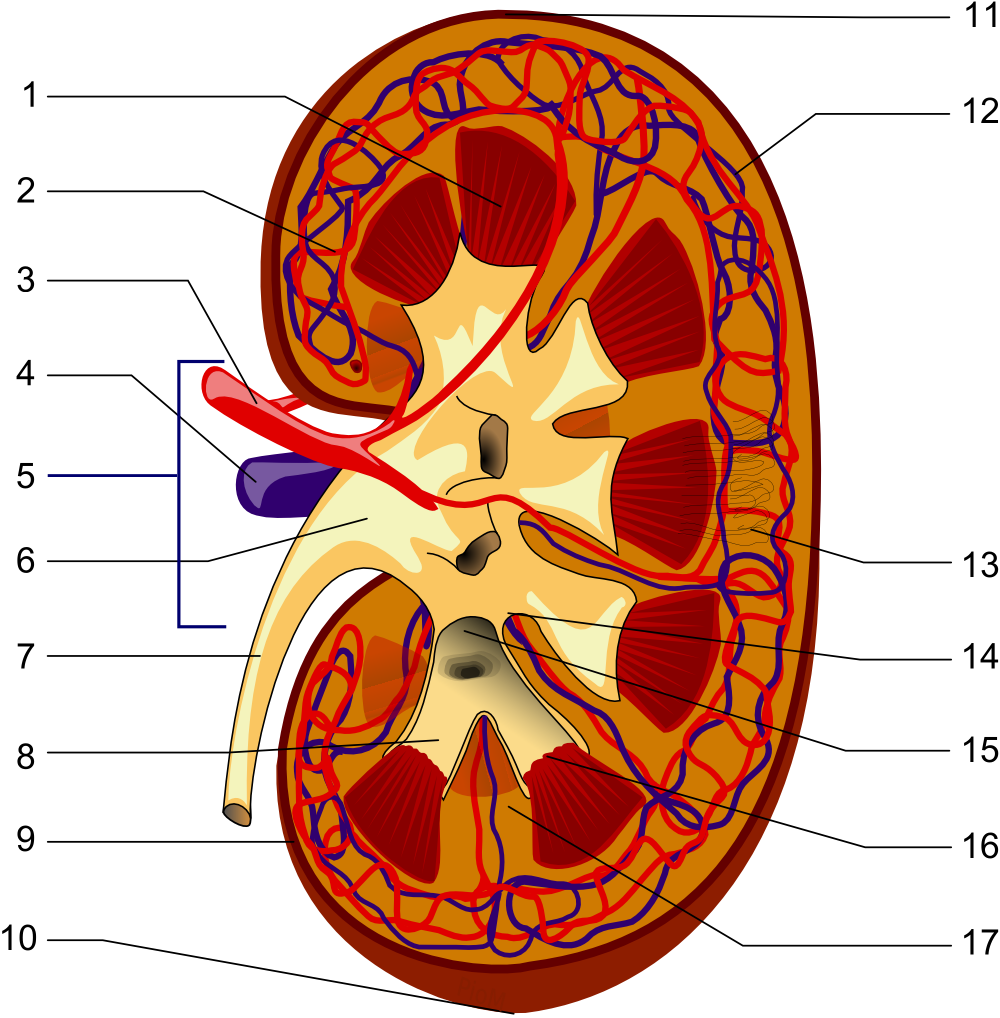Renal artery stenosis: Difference between revisions
Rim Halaby (talk | contribs) |
Rim Halaby (talk | contribs) No edit summary |
||
| Line 17: | Line 17: | ||
'''For patient information click [[{{PAGENAME}} (patient information)|here]]''' | '''For patient information click [[{{PAGENAME}} (patient information)|here]]''' | ||
{{CMG}}; '''Associate Editor-In-Chief:''' {{ | {{CMG}}; '''Associate Editor-In-Chief:''' {{Rim}} | ||
{{SK}}: RAS | {{SK}}: RAS | ||
Revision as of 08:01, 8 November 2013
| Renal artery stenosis | |
 | |
|---|---|
| Renal artery is #3 | |
| ICD-9 | 440.1 |
| DiseasesDB | 11255 |
| MedlinePlus | 001273 |

|
Renal artery stenosis Microchapters |
|
Diagnosis |
|---|
|
Treatment |
|
Case Studies |
|
Renal artery stenosis On the Web |
|
American Roentgen Ray Society Images of Renal artery stenosis |
For patient information click here
Editor-In-Chief: C. Michael Gibson, M.S., M.D. [1]; Associate Editor-In-Chief: Rim Halaby, M.D. [2]
Synonyms and keywords:: RAS
Overview
Pathophysiology
Causes
Classification
Renal artery stenosis may be classified according to whether there is unilateral or bilateral involvement of the renal arteries. Additionally, renal artery stenosis is often classified anatomically according to severity of luminal narrowing. The following criteria are used according to most published studies about ARAS.[1][2]
| Severity | Luminal Narrowing |
| Normal | 0% |
| Mild | 1-49% |
| Moderate | 50-69% |
| Severe | 70-99% |
| Occluded | 100% |
To note, some studies have different classification criteria than those listed above, with "mild disease" starting after 50% of luminal narrowing. Such classification remains coherent with the definition of ARAS as narrowing > 50%.[3]
Another classification is based on hemodynamic function in RAS. This classification simply differentiates between hemodynamically insignificant RAS (< 75% stenosis) and hemodynamically significant RAS (> 75% stenosis).[4]
Epidemiology and Demographics
Atherosclerotic renal artery stenosis (ARAS) is considered a disease of the elderly. The true prevalence of ARAS has not been reliably determined and prevalence rates present so far may in fact be an underestimate or an overestimate of the true prevalence due to selection criteria in different studies. The prevalence of ARAS increases substantially among patients with cardiovascular co-morbidities, such as diabetes mellitus, dyslipidemia, essential hypertension, and known coronary or peripheral artery disease.
Risk Factors
Risk factors for ARAS, per se, are poorly studied. The most commonly associated risk factors are those similar for other types of atherosclerosie, such as advanced age, dyslipidemia, diabetes mellitus, smoking, and hypertension.
Diagnosis
Non-invasive diagnosis is the first line for screening of ARAS. Doppler ultrasonography, CTA, and MRA may all be used to diagnose ARAS. Invasive diagnostic technique, such as renal angiography, is considered the gold standard for diagnosis and may be used when concomitant catheterizations are needed or when previously performed non-invasive techniques yielded equivocal results.
Diagnostic Criteria | History and Symptoms | Physical Examination | X Ray | CT | MRI | Echocardiography or Ultrasound | Other Imaging Findings | Other Diagnostic Studies
Treatment
Medical therapy is considered the first line of management for patients with ARAS. Several anti-hypertensive medications have proven to be efficacious in ARAS patients. According to the 2005 ACC/AHA Guidelines for the Management of PAD, ACE-I and CCB may be used in patients with RAS for their lowering of BP and for nephroprotective effects. Other blood pressure lowering medications include beta-blockers, hydrazine, and chlorothiazide. Although ARBs may be used as well, they still have level B evidence for use in ARAS because trials have not been conducted on the use of ARBs in such patients.
Angioplasty and stent implantation were previously recommended by the 2005 ACC/AHA Guidelines. However, emerging data from the ASTRAL trial showed that there are substantial risks associated with renal angioplasty and little overall benefit. As such, the role of angioplasty and stenting remain controversial.
Vascular reconstruction of the renal arteries may be indicated in a small minority of patients. However, surgical reconstruction is associated with complications and carries a 5-15% for surgical re-intervention.
Medical Therapy | Angioplasty and Stenting | Surgery | Primary Prevention | Secondary Prevention | Cost-Effectiveness of Therapy | Future or Investigational Therapies
Case Studies
Related Chapters
- Renovascular hypertension
- Acute renal failure
- Atherosclerosis
- Chronic glomerulonephritis
- Hypersensitivity nephropathy
- Hypertension
- Malignant hypertension
- Nephrosclerosis
- Renovascular hypertension
- Uremia
External Links
- Bilateral Renal Artery Stenosis
{{#ev:youtube|xeV3lmYi1Hk}}
- Right Renal Artery Stenosis
{{#ev:youtube|4UzLFatOg1Q}}
de:Nierenarterienstenose nl:Nierarteriestenose
- ↑ Kliewer MA, Tupler RH, Carroll BA, Paine SS, Kriegshauser JS, Hertzberg BS; et al. (1993). "Renal artery stenosis: analysis of Doppler waveform parameters and tardus-parvus pattern". Radiology. 189 (3): 779–87. doi:10.1148/radiology.189.3.8234704. PMID 8234704.
- ↑ Desberg AL, Paushter DM, Lammert GK, Hale JC, Troy RB, Novick AC; et al. (1990). "Renal artery stenosis: evaluation with color Doppler flow imaging". Radiology. 177 (3): 749–53. doi:10.1148/radiology.177.3.2243982. PMID 2243982.
- ↑ Lao D, Parasher PS, Cho KC, Yeghiazarians Y (2011). "Atherosclerotic renal artery stenosis--diagnosis and treatment". Mayo Clin Proc. 86 (7): 649–57. doi:10.4065/mcp.2011.0181. PMC 3127560. PMID 21719621.
- ↑ Kidney Disease Outcomes Quality Initiative (K/DOQI) (2004). "K/DOQI clinical practice guidelines on hypertension and antihypertensive agents in chronic kidney disease". Am J Kidney Dis. 43 (5 Suppl 1): S1–290. PMID 15114537.